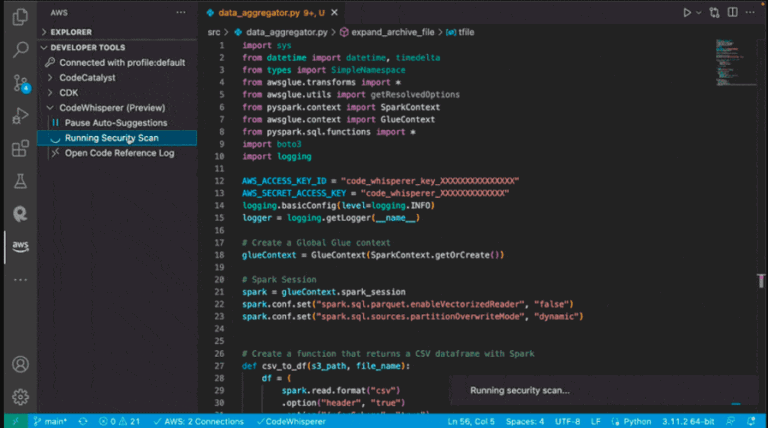Amazon Web Services (AWS) is introducing a new AI-driven development environment, called Kiro. It is an agent-based IDE that supports developers from idea to production system.
While many developers are now comfortable with the fast, creative process of vibe coding via generative AI, Kiro focuses on the next step: translating prototypes into fully-fledged software in a structured and reliable way.
Research shows that developers overestimate the power of AI. In fact, AI tends to slow down development tasks. AWS seems to recognize this. Vibe coding, the iterative generation of code via prompts, can quickly produce a functioning prototype, but in practice, this is rarely suitable for production. According to AWS, these experimental workflows fall short in terms of specification management, documentation, and code quality.
AWS aims to bridge this gap with Kiro. The tool is designed around a specification-driven development methodology, in which users first enter their requirements in natural language. Based on this, Kiro generates so-called specs. These are user stories in markdown, accompanied by acceptance criteria in EARS notation. These form the guideline for both the technical elaboration and the final implementation.
Structured approach
Kiro distinguishes itself primarily through its structured approach. From a simple prompt, the IDE automatically generates user stories, technical designs (such as API endpoints, TypeScript interfaces, and database schemas), and a set of tasks and subtasks. Each implementation step is linked to the original specifications. It immediately includes details such as unit tests, load statuses, mobile responsiveness, and accessibility requirements.
In addition, Kiro offers so-called hooks. These are event-driven automations that perform tasks when actions such as saving files occur. Examples include automatically updating test files when changes are made to React components and updating documentation when APIs are modified. Or scanning for security issues before a commit. These hooks ensure consistent quality control within development teams, without any extra manual steps.
Kiro is built on the open source platform Code OSS, which means that users can continue to use their existing VS Code settings and Open VSX plugins. The IDE also supports Model Context Protocol (MCP), which allows external tools to add context to AI tasks. In addition, built-in steering rules and an integrated AI chat agent are available for ad hoc development tasks.
According to AWS, Kiro is an important step in improving collaboration between developers and AI. The way people and machines build software together today is still fragmented and inefficient, the company says. With Kiro, AWS aims to reduce technical debt, prevent inconsistencies between teams, and retain knowledge when staff changes, among other things.
